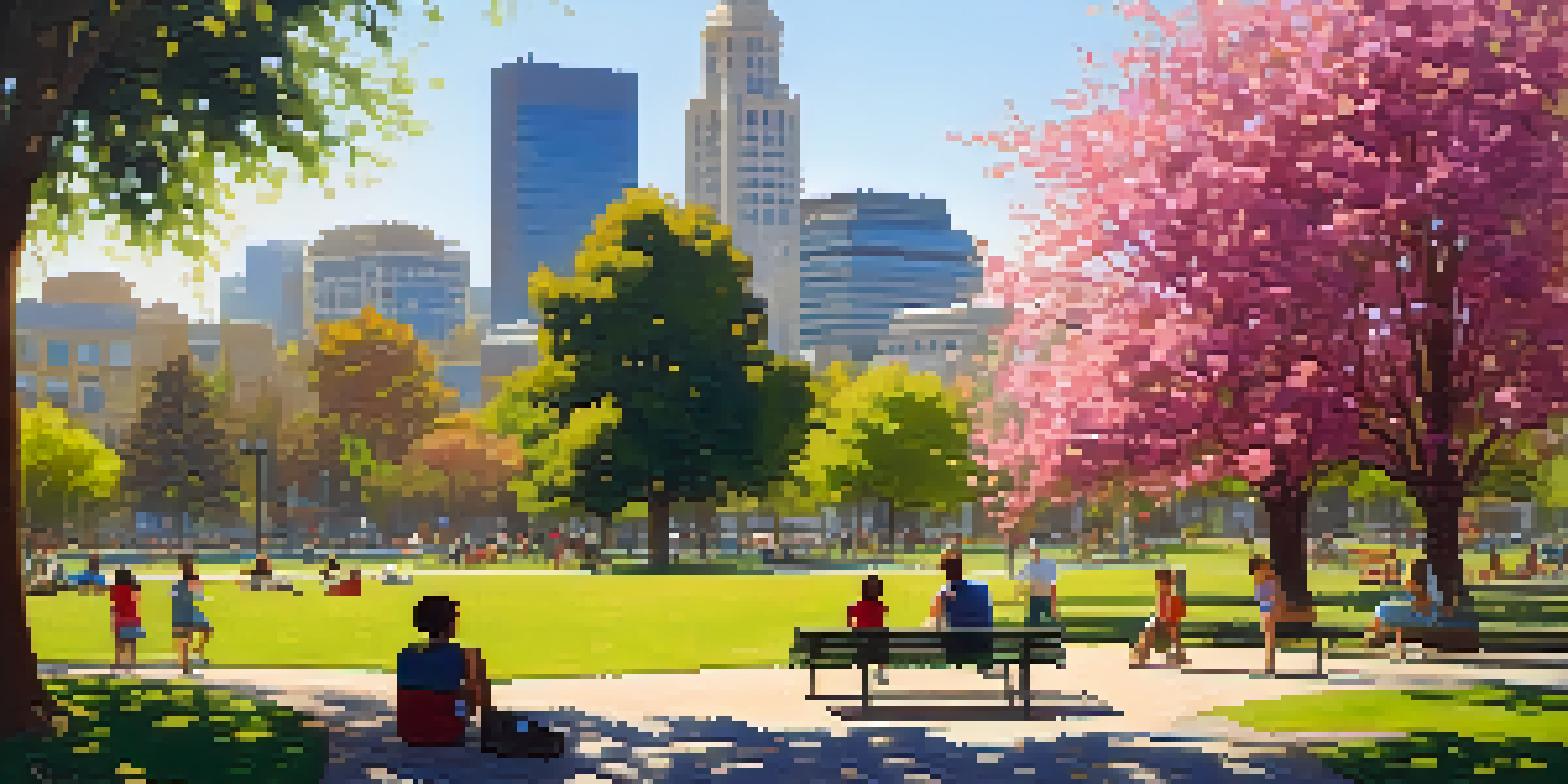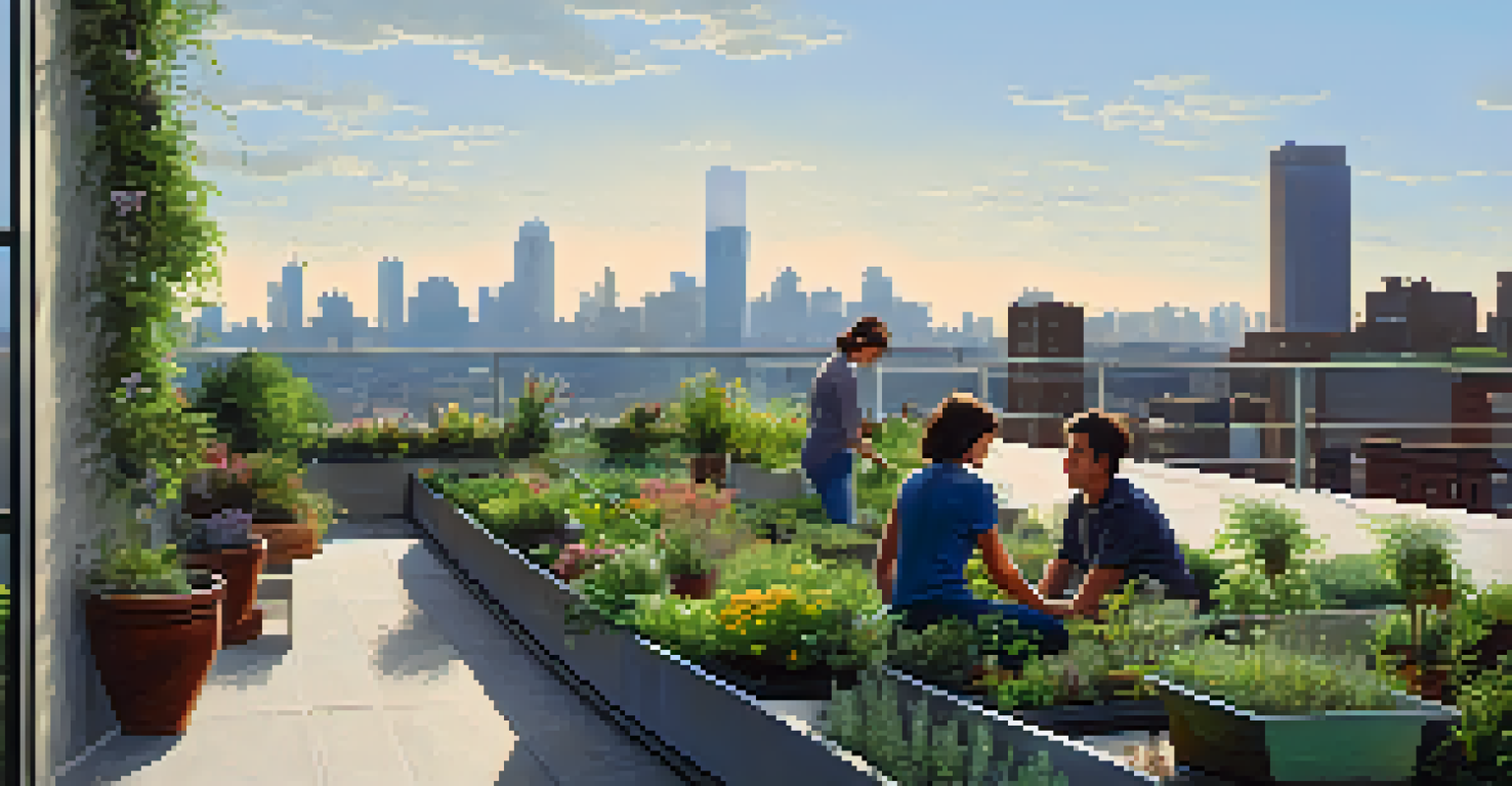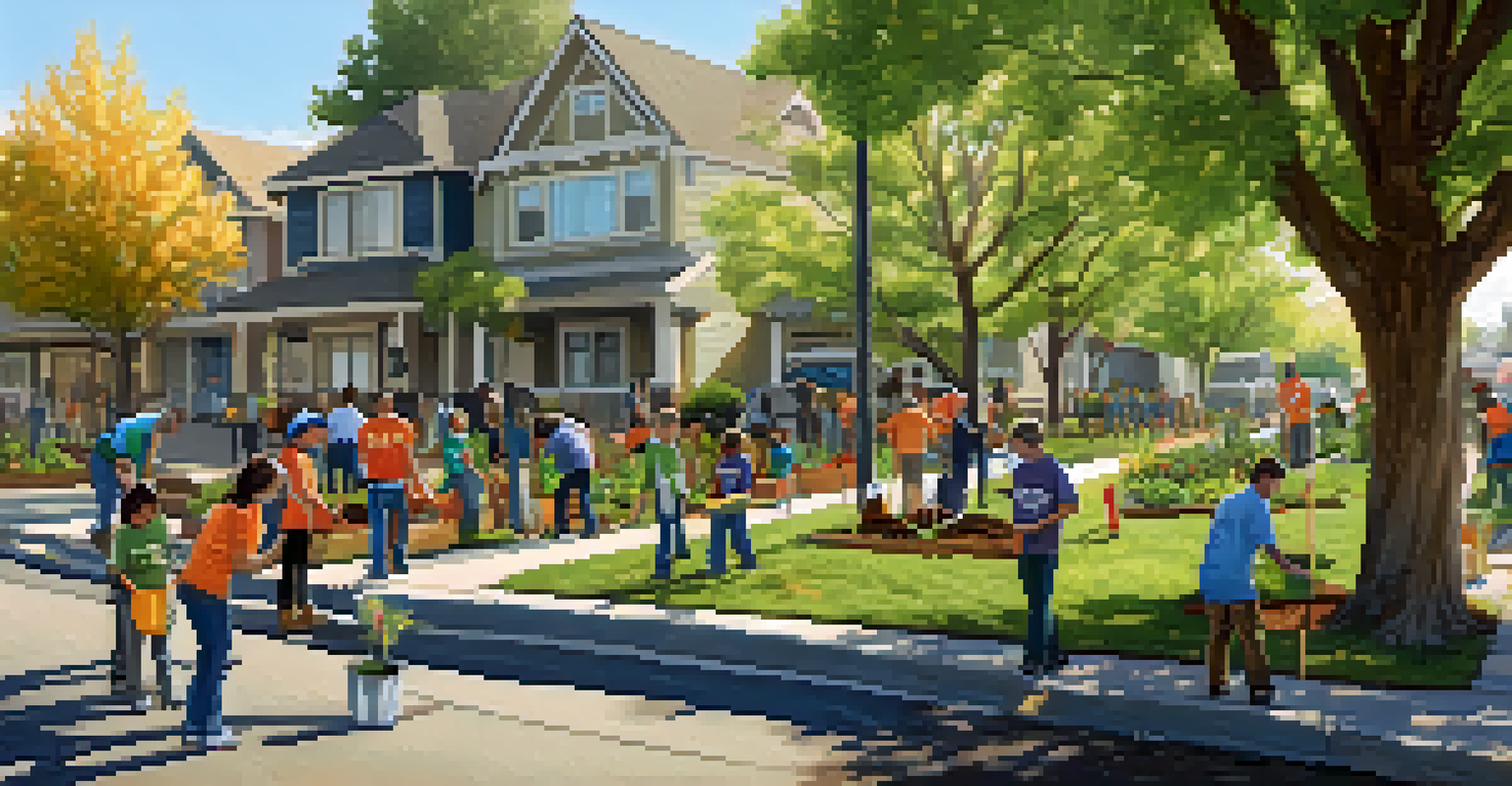Role of Vegetation in Mitigating Sacramento's Heat Islands

Understanding Urban Heat Islands and Their Impact
Urban heat islands (UHIs) are areas in cities that experience significantly higher temperatures than their rural surroundings due to human activities. In Sacramento, the extensive use of concrete and asphalt absorbs and retains heat, leading to increased energy consumption and health risks. This phenomenon not only affects the comfort of residents but also exacerbates air pollution and contributes to climate change.
The single greatest opportunity for reducing heat in our cities is to plant trees and create green spaces.
Research shows that urban areas can be up to 5°F hotter than nearby rural areas, particularly during summer months. This temperature difference can lead to uncomfortable living conditions and increased heat-related illnesses. Understanding the UHI effect is crucial for developing strategies to cool our cities, especially in places like Sacramento where summer temperatures can soar.
Mitigating UHI effects is essential not just for improving comfort but also for protecting vulnerable populations, such as the elderly and those with pre-existing health conditions. As temperatures rise, the need for effective solutions becomes more urgent, making it vital to explore how greenery can help.
The Cooling Power of Vegetation
Vegetation plays a key role in cooling urban areas through a process called evapotranspiration. This natural process occurs when plants release moisture into the air, which helps lower surrounding temperatures. In Sacramento, incorporating more trees, shrubs, and green spaces can significantly reduce the heat absorbed by hard surfaces.

For instance, a single mature tree can provide the cooling equivalent of 10 air conditioning units running for 20 hours a day. This is a substantial benefit, especially during the sweltering summer months when residents seek relief from the heat. The presence of greenery not only cools the environment but also improves air quality by filtering pollutants.
Urban Heat Islands Threaten Cities
Urban heat islands (UHIs) significantly raise temperatures in cities, leading to discomfort and health risks for residents.
By increasing vegetation cover, cities can create a more pleasant and comfortable living environment. This transformation not only enhances the aesthetic appeal of neighborhoods but also fosters a sense of community as green spaces become gathering spots for residents.
Strategic Tree Planting Initiatives
Strategic tree planting initiatives are essential for urban heat mitigation in Sacramento. City programs focus on planting shade trees in public spaces such as parks, sidewalks, and schoolyards. By prioritizing areas that experience intense heat, these initiatives can maximize cooling effects and encourage more outdoor activity.
Urban greening is not just about aesthetics; it's about creating a healthier, more sustainable environment for future generations.
Moreover, local organizations and community groups often partner with the city to enhance these efforts. Volunteer tree planting events not only beautify neighborhoods but also engage residents in climate action. When communities come together to plant trees, they foster environmental stewardship and a shared responsibility for the urban ecosystem.
These planting initiatives are typically guided by studies that identify the best species for local conditions. Choosing the right trees can lead to long-lasting benefits, as certain species provide more shade and require less maintenance, ensuring that green spaces thrive for years to come.
The Role of Green Roofs and Walls
Green roofs and living walls are innovative solutions that can help mitigate heat in urban environments. In Sacramento, these structures not only provide insulation but also reduce the urban heat island effect by absorbing sunlight and providing cooling through evapotranspiration. They create an attractive aesthetic while also serving functional purposes.
For example, a green roof can lower the temperature of a building by absorbing heat and reducing the need for air conditioning. This not only saves energy costs but also contributes to a more sustainable urban environment. By transforming rooftops into green spaces, we can make efficient use of limited space in densely populated areas.
Vegetation Cools Urban Environments
Incorporating trees and green spaces through initiatives like strategic tree planting can effectively mitigate the heat absorbed by urban surfaces.
Furthermore, green roofs and walls can enhance biodiversity by providing habitats for birds and insects. This added layer of ecological diversity helps to create a balanced urban ecosystem that is resilient to climate change impacts while offering additional benefits to the community.
Community Engagement in Greening Efforts
Community engagement is vital in the battle against urban heat islands. In Sacramento, various programs encourage residents to participate in tree planting, maintenance, and care for local green spaces. When communities are involved, they develop a sense of ownership and pride that fosters a long-term commitment to sustainability.
Educational workshops and events help raise awareness about the importance of vegetation for cooling. By informing the public about how trees and plants can combat heat, communities are more likely to advocate for greener policies and support local initiatives. Engaging residents not only empowers them but also cultivates a culture of environmental responsibility.
Additionally, community gardens are a fantastic way to bring people together while enhancing the local environment. These gardens serve as both a food source and a green space, providing a natural cooling effect while promoting healthy eating and social interaction among residents.
Policy and Planning for a Greener Sacramento
Effective policy and urban planning are critical to ensuring a greener Sacramento. Local government initiatives that promote sustainable landscaping practices and prioritize green infrastructure can significantly reduce UHI effects. Policies that incentivize tree planting and green roofs can encourage private property owners to participate in these efforts.
In addition, integrating vegetation into city planning processes can lead to better overall urban design. By considering greenery in zoning laws and development guidelines, Sacramento can create more livable spaces that enhance both the environment and the quality of life for its residents. This proactive approach not only addresses current challenges but also prepares the city for future climate impacts.
Community Engagement Drives Change
Active participation in greening efforts fosters a sense of ownership among residents, enhancing sustainability and environmental awareness.
Furthermore, collaboration between city planners, environmental organizations, and residents can lead to innovative solutions that serve the community's needs. By working together, Sacramento can create a comprehensive plan that incorporates vegetation into every aspect of urban development.
The Future of Sacramento's Urban Landscape
Looking ahead, Sacramento's urban landscape can become a model for sustainability through increased vegetation. As the city embraces innovative greening strategies, it can enhance resilience against climate change while improving the quality of life for its residents. This future vision includes more parks, tree-lined streets, and vibrant green spaces for everyone to enjoy.
The integration of technology, such as smart irrigation systems and urban biodiversity monitoring, can further augment these efforts. By leveraging data and technology, Sacramento can ensure that its greening initiatives are sustainable and effective in the long run. This forward-thinking approach not only addresses the current heat challenges but also sets the stage for a healthier, more vibrant city.

Ultimately, the role of vegetation in mitigating urban heat islands is a crucial piece of the puzzle. By prioritizing greenery, Sacramento can foster a more sustainable urban environment that benefits both people and the planet, creating a lasting legacy for future generations.